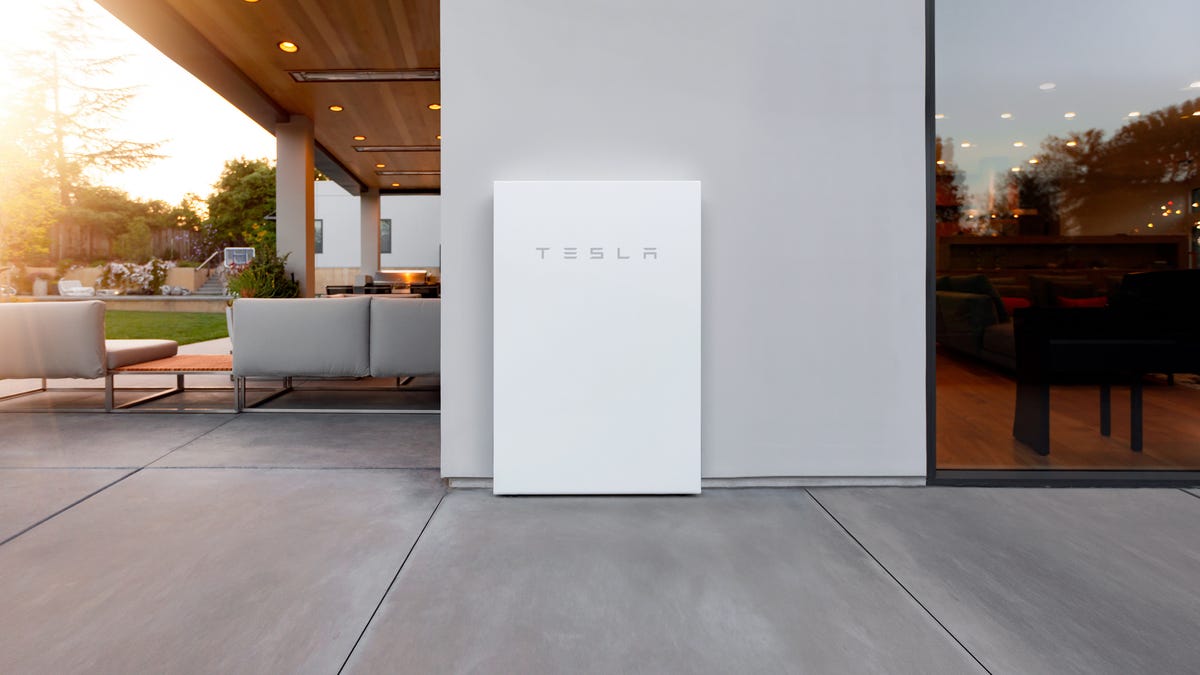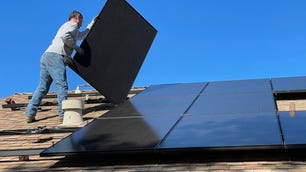How Much Does a Tesla Powerwall Cost?
Looking to get a home battery? Here's everything you need to know about the Tesla Powerwall.

The high-powered Tesla Powerwall battery is riding the dual waves of the brand's widespread automotive recognition and a boom in residential solar adoption that's been reinforced by numerous incentives, including a federal tax credit that allows you to claim 30% of the total cost of your storage system on your tax return. This means that solar batteries are more accessible now, giving you easier access to backup power during power outages, remedied using renewable energy.
Tesla itself has also recently offered rebates that can be combined with other incentives.
Even with the many credits, rebates and other incentives, batteries are often the most expensive single component of a residential solar system. The Powerwall 2 is a fairly pricey energy storage unit, at between $9,200 and $11,500. It's possible to find it for cheaper than $9,000.
Can solar panels save you money?
Interested in understanding the impact solar can have on your home? Enter some basic information below, and we’ll instantly provide a free estimate of your energy savings.
In this quick guide, we'll take a closer look at the Tesla Powerwall 2 and try to help you decide if it's a worthwhile purchase.
There's plenty to consider that you may not have thought of, according to Garrett Mendelsohn, founder of Solar Bootcamp.
"The thing about batteries is they have a 10- to a 15-year lifespan, and a lot of the time homeowners finance for 25 years," he says. "So you're financing a product that's not going to really be doing anything by the end of the 25 years and paying interest on it."
Let's dig into the details to help evaluate what makes sense for you.
What is the Tesla Powerwall?
Put simply, the Tesla Powerwall is a big battery that can be mounted inside or outside of your home. It can be hooked up to charge an electric vehicle in your garage, provide backup power, store excess solar energy from a connected solar array or all of the above. You can also connect multiple Powerwalls together to have more capacity to do all these things at once.
A Tesla Powerwall solar battery, just like any other solar energy storage system, can keep your essential systems online in case the grid goes down, help you maximize your net metering savings or even be your primary source of power if you have an off-grid setup.
Those are the basics, here's some of the more technical details:
Tesla Powerwall 2 specs
| Usable capacity | 13.5 kWh |
|---|---|
| How many can I install? | Up to 10 units for a total capacity of 135 kWh |
| Round-trip efficiency | 90% |
| Depth of discharge | 100% |
| Peak power output (on-grid) | 7 kW |
| Continuous power output (on-grid) | 5 kW |
| Battery chemistry | Lithium-ion |
| Price | $9,200 - $11,500 |
How much does a Tesla Powerwall cost?
Adding energy storage to your home can be a substantial investment. The Tesla Powerwall 2 typically costs between $9,200 and $11,500 before taxes and installation. It's a lot to pay for a single battery, but it's competitive with other comparable storage systems on the market.
Other considerations could affect the total overall cost of installing a Powerwall: Installing one in a safe and convenient place might require labor and some other material costs. On the other side of the ledger, the federal tax credit, other incentives from state and local governments, utilities and even Tesla itself can drive down the net price.
Tesla offers an energy design tool that it uses to help drive sales, but it's also useful to get a sense of how much you might expect to spend on a solar system for your home that includes a Tesla Powerwall battery. Depending on your home's energy needs, you might need multiple Powerwalls if you're looking to create a whole-home backup. Definitely don't make any major decisions based solely on online research. Talk to multiple installers in your area to get more than one quote specific to your situation.
Pros and cons of the Tesla Powerwall
Pros:
- 10-year warranty
- Well-rounded efficiency and performance
- Cheaper than other batteries of similar size
- Compatible with and without solar panels
Cons:
- Limited modularity
- Glitchy energy management app
- Poor customer service reputation
Tesla Powerwall 2 vs. other batteries
| Category | Tesla Powerwall 2 | Generac Pwrcell | LGES 16H Prime | Enphase IQ Battery 10/10T | SunPower SunVault |
|---|---|---|---|---|---|
| Usable capacity | 13.5 kWh | 9 kWh - 18 kWh | 16 kWh | 10.08 kWh | 13 kWh - 39 kWh |
| How many can I stack? | Up to 10 | Up to two battery cabinets | Up to two | N/A | Up to two |
| Round-trip efficiency | 90% | 96.50% | >90% | 89% | 86% |
| Depth of discharge | 100% | 84% | 100% | 98% | 92% |
| Peak power output (on-grid) | 7 kW | 4.5 kW - 9 kW | 11 kW | 5.7 kW | 10 kW - 12 kW (off-grid) |
| Continuous power output (on-grid) | 5 kW | 3.4 kW - 7.6 kW | 7 kW | 3.84 kW | 6.8 kW - 13.6 kW (off-grid) |
| AC- or DC-coupled? | AC | DC | DC | AC | AC |
| Price | $9,200 - $11,500 | $10,000 - $20,000 | $7,000 - $11,000 | $8,000 - $10,000 | $16,000 - $26,000 |
Is the Tesla Powerwall worth it?
If you're set on storing a significant amount of energy for your home, the Powerwall is a solid choice. It has a great warranty, strong performance, a competitive price and the backing of a well-known brand. Some have reported the company's customer service to be lacking. Tesla no longer operates a media office and didn't provide any comment for this story.
If you're on the fence about getting a large battery, Mendelsohn thinks it might be better to wait. He points out that most components of a home solar system are warrantied for 25 years, but batteries are rarely guaranteed to last longer than a decade.
"If you don't have blackouts, it's not really worth it for the price. You spend $13,000 to $15,000… for a battery that can't even do the full house; it can do the essentials, not even the whole house," Mendelsohn said. "So it doesn't really make a lot of sense until the battery technology gets better, and they can be warrantied for 25 years."
Frequently asked questions
Is the Tesla Powerwall eligible for the federal solar tax credit?
Yes, a Powerwall is eligible for a 30% federal tax credit.
How many Tesla Powerwalls do I need?
Several factors that go into answering this question, including your energy goals and the needs of your home. You can start to get a sense by using Tesla's energy design tool and speaking to local installers.
What's the difference between the Tesla Powerwall and the Tesla Powerwall Plus?
The Powerwall Plus is a Powerwall 2 battery combined with a Tesla Solar Inverter and must be installed with solar panels. The Powerwall Plus also has a higher backup (off-grid) power output rating.
How much does the Tesla Powerwall 3 cost?
The Tesla Powerwall 3 was released in the US earlier this year and costs $8,400 before taxes and installation.


